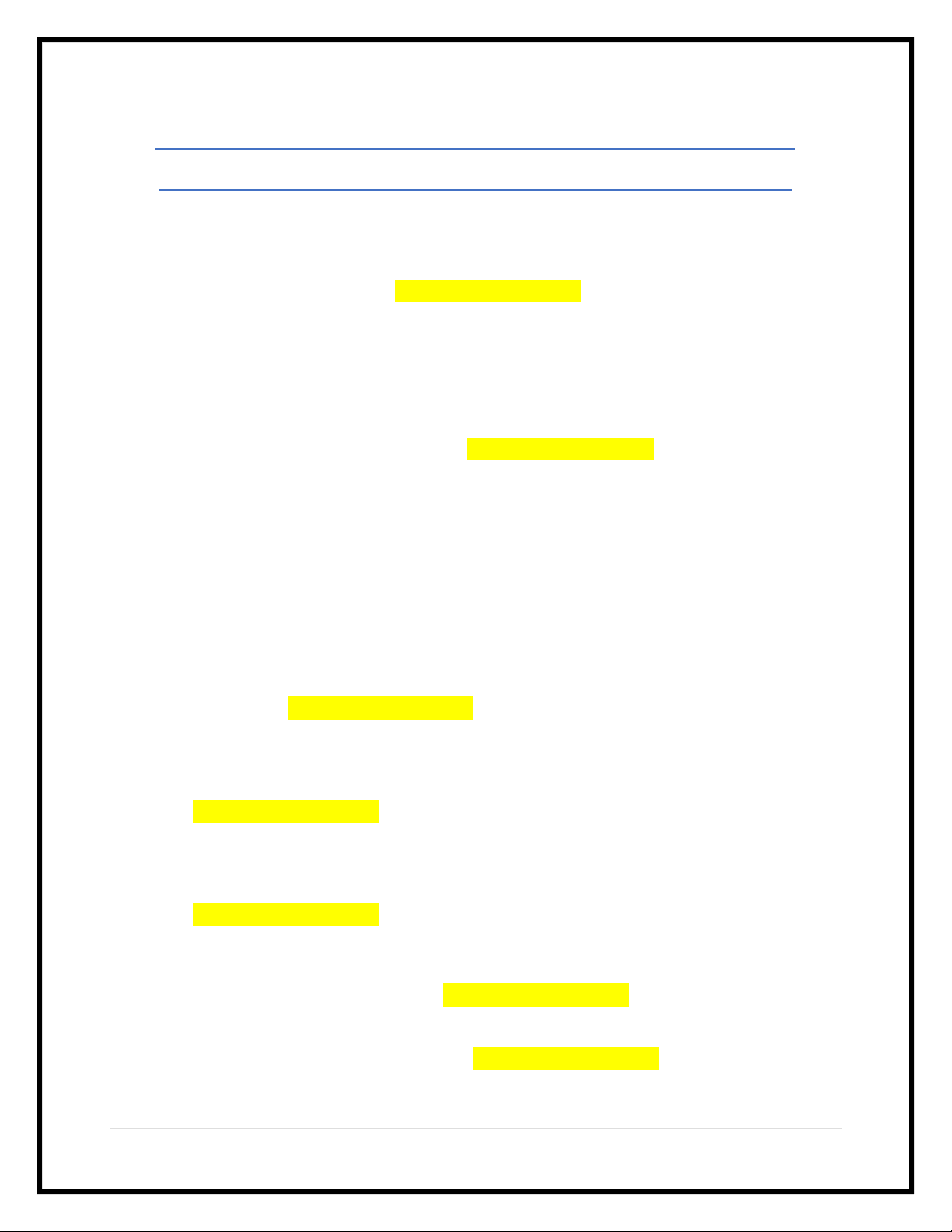
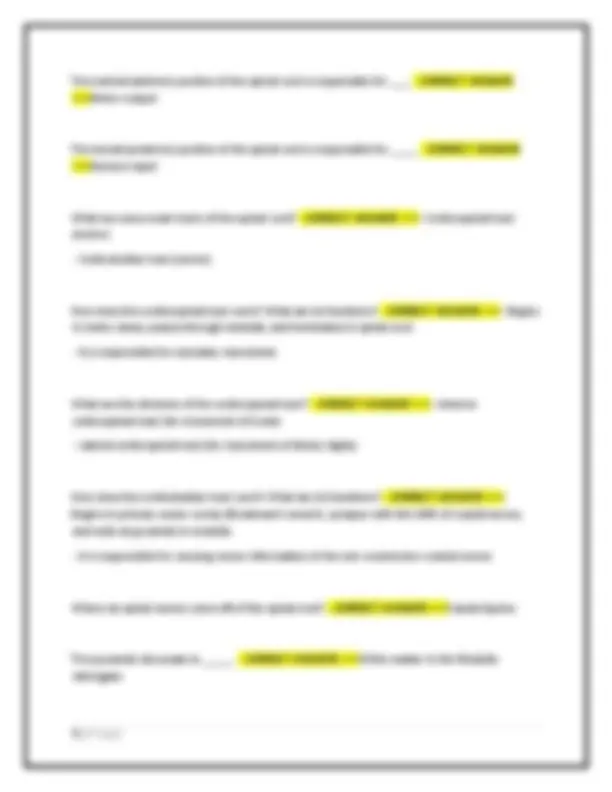
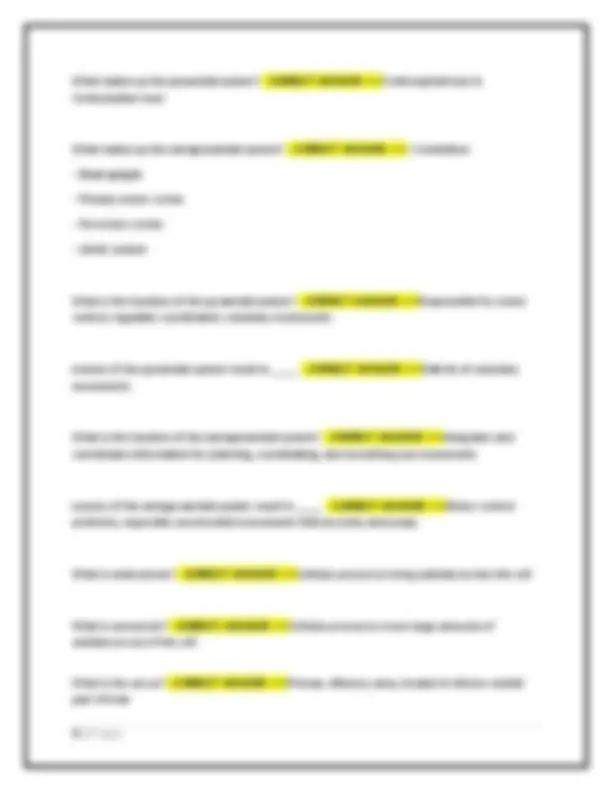
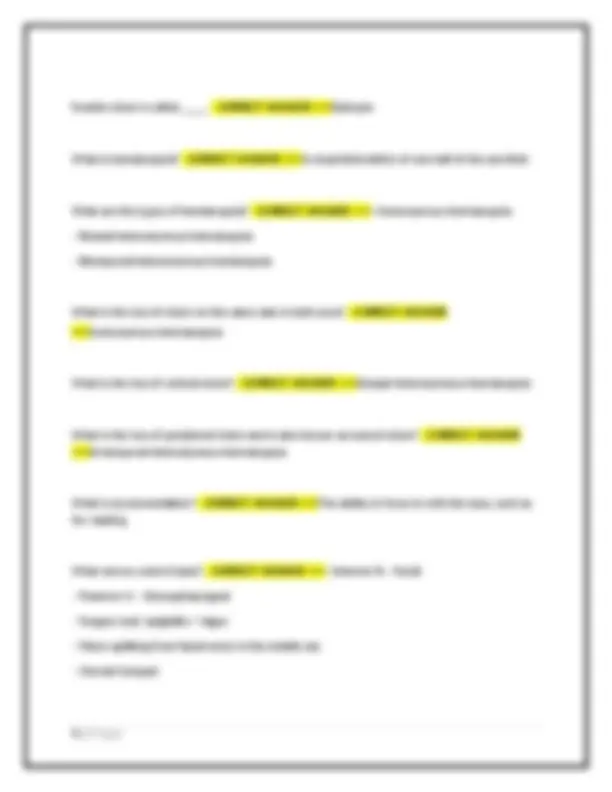
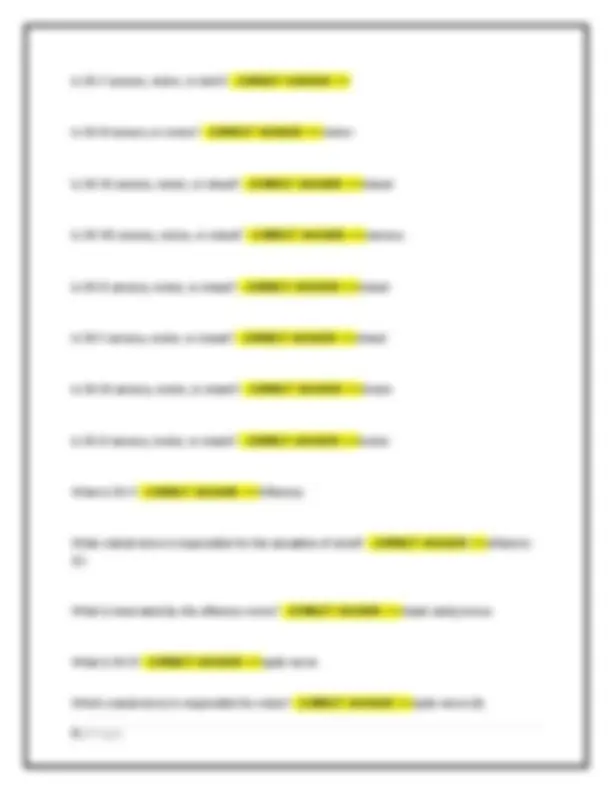
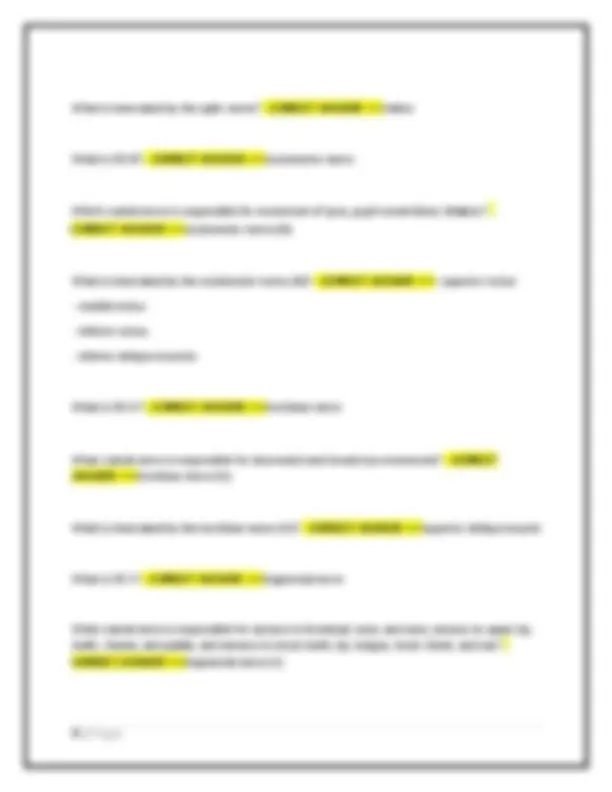
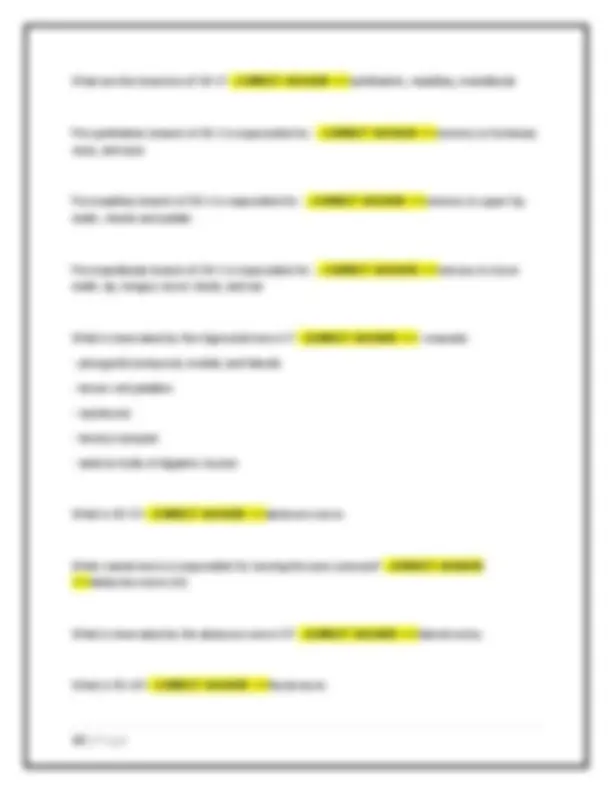
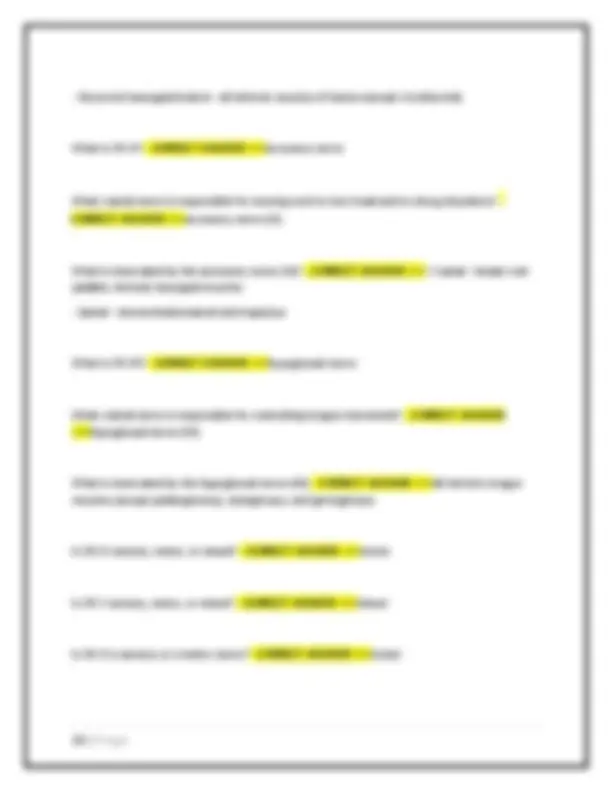
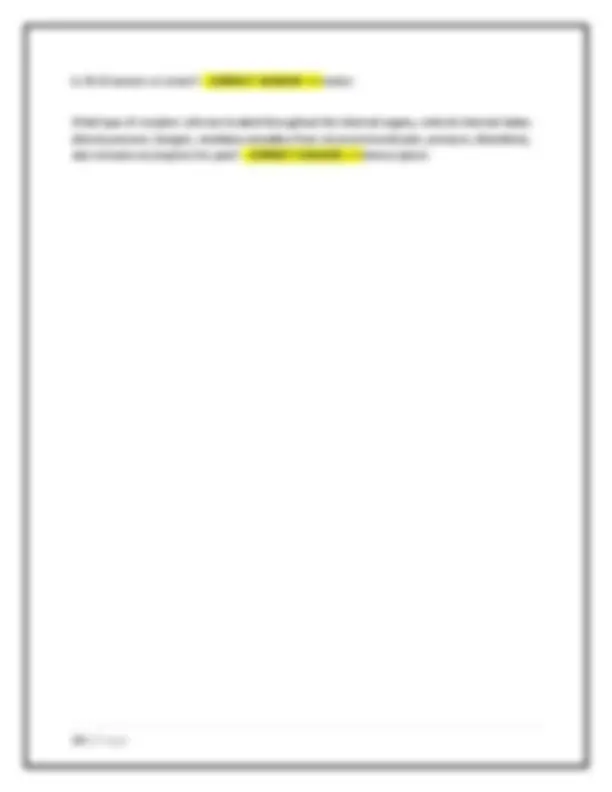


Study with the several resources on Docsity

Earn points by helping other students or get them with a premium plan


Prepare for your exams
Study with the several resources on Docsity

Earn points to download
Earn points by helping other students or get them with a premium plan
Community
Ask the community for help and clear up your study doubts
Discover the best universities in your country according to Docsity users
Free resources
Download our free guides on studying techniques, anxiety management strategies, and thesis advice from Docsity tutors
SLP 6351 FINAL Exam 200 QUESTIONS & CORRECT ANSWERS (WELL VERIFIED) ALREADY GRADED A+
Typology: Exams
1 / 14

This page cannot be seen from the preview
Don't miss anything!









What are the types of receptor cells? - CORRECT ANSWER >>> - Exteroceptors
What structure responds to the length of muscles? - CORRECT ANSWER >>> muscle spindles What structure detects tension and responds to strength of muscle contractions? - CORRECT ANSWER >>> Golgi tendon organs What is the relevance of adaptation in receptor cells? - CORRECT ANSWER >>> Allows for a gradual decrease over time in the responsiveness of the sensory system to a constant stimulus. What is proprioception? - CORRECT ANSWER >>> Ability to understand pressure, movement, vibration, and body position What type of matter is inside the spinal cord? - CORRECT ANSWER >>> H-shaped gray matter Where does the spinal cord stop in adults? - CORRECT ANSWER >>> Lower border of first lumbar vertebrae Where does the spinal cord stop in children? - CORRECT ANSWER >>> Upper border of third lumbar vertebrae How many vertebrae are there? - CORRECT ANSWER >>> 32 Spinal nerves and cranial nerves are considered ____. - CORRECT ANSWER >>> Lower motor neurons What is a tract? - CORRECT ANSWER >>> Bundles of white matter in spinal cord with common function
What makes up the pyramidal system? - CORRECT ANSWER >>> Corticospinal tract & Corticobulbar tract What makes up the extrapyramidal system? - CORRECT ANSWER >>> - Cerebellum
Double vision is called ____. - CORRECT ANSWER >>> Diplopia What is hemianopsia? - CORRECT ANSWER >>> A visual field defect of one half of the eye field What are the types of hemianopsia? - CORRECT ANSWER >>> - Homonymous hemianopsia
** homonymous hemianopsia What is the loss of central vision? - CORRECT ANSWER >>> binasal heteronymous hemianopsia What is the loss of peripheral vision and is also known as tunnel vision? **- CORRECT ANSWER ** bi-temporal heteronymous hemianopsia What is accommodation? - CORRECT ANSWER >>> The ability to focus in with the eyes, such as for reading What nerves control taste? - CORRECT ANSWER >>> - Anterior ⅔ - Facial
What results from unilateral damage to the Vagus nerve? - CORRECT ANSWER >>> Mostly affects voice/ vocal quality (breathy voice) The ____ nerve controls regulation of heart rhythm as part of the autonomic nervous function. - CORRECT ANSWER >>> Vagus Recurrent laryngeal nerve innervates all ______ except for the ____. **- CORRECT ANSWER
** - Intrinsic muscles of larynx
Is CN V sensory, motor, or both? - CORRECT ANSWER >>> Is CN III sensory or motor? - CORRECT ANSWER >>> motor Is CN VII sensory, motor, or mixed? - CORRECT ANSWER >>> mixed Is CN VIII sensory, motor, or mixed? - CORRECT ANSWER >>> sensory Is CN IX sensory, motor, or mixed? - CORRECT ANSWER >>> mixed Is CN X sensory, motor, or mixed? - CORRECT ANSWER >>> mixed Is CN XII sensory, motor, or mixed? - CORRECT ANSWER >>> motor Is CN XI sensory, motor, or mixed? - CORRECT ANSWER >>> motor What is CN I? - CORRECT ANSWER >>> Olfactory What cranial nerve is responsible for the sensation of smell? - CORRECT ANSWER >>> olfactory (1) What is innervated by the olfactory nerve? - CORRECT ANSWER >>> nasal cavity/uncus What is CN II? - CORRECT ANSWER >>> optic nerve Which cranial nerve is responsible for vision? - CORRECT ANSWER >>> optic nerve (II)
What are the branches of CN V? - CORRECT ANSWER >>> ophthalmic, maxillary, mandibular The ophthalmic branch of CN V is responsible for : - CORRECT ANSWER >>> sensory to forehead, nose, and eyes The maxillary branch of CN V is responsible for : - CORRECT ANSWER >>> sensory to upper lip, teeth, cheeks and palate The mandibular branch of CN V is responsible for : - CORRECT ANSWER >>> sensory to lower teeth, lip, tongue, lower cheek, and ear What is innervated by the trigmenial nerve V? - CORRECT ANSWER >>> - masseter
** abducens nerve (VI) What is innervated by the abducens nerve VI? - CORRECT ANSWER >>> lateral rectus What is CN VII? - CORRECT ANSWER >>> facial nerve
Which cranial nerve is responsible for all facial expressions? - CORRECT ANSWER >>> facial nerve (VII) What is innervated by the facial nerve (VII)? - CORRECT ANSWER >>> - posterior belly of digastric
** hypoglossal nerve (XII) What is innervated by the hypoglossal nerve (XII) - CORRECT ANSWER >>> all intrinsic tongue muscles (except palatoglossus), styloglossus, and genioglossus Is CN IV sensory, motor, or mixed? - CORRECT ANSWER >>> motor Is CN V sensory, motor, or mixed? - CORRECT ANSWER >>> mixed Is CN VI a sensory or a motor nerve? - CORRECT ANSWER >>> motor
Is CN III sensory or motor? - CORRECT ANSWER >>> motor What type of receptor cells are located throughout the internal organs; controls internal states (blood pressure, hunger), mediates sensation from viscera (visceral pain, pressure, distention); also includes nociceptors for pain? - CORRECT ANSWER >>> interoceptors